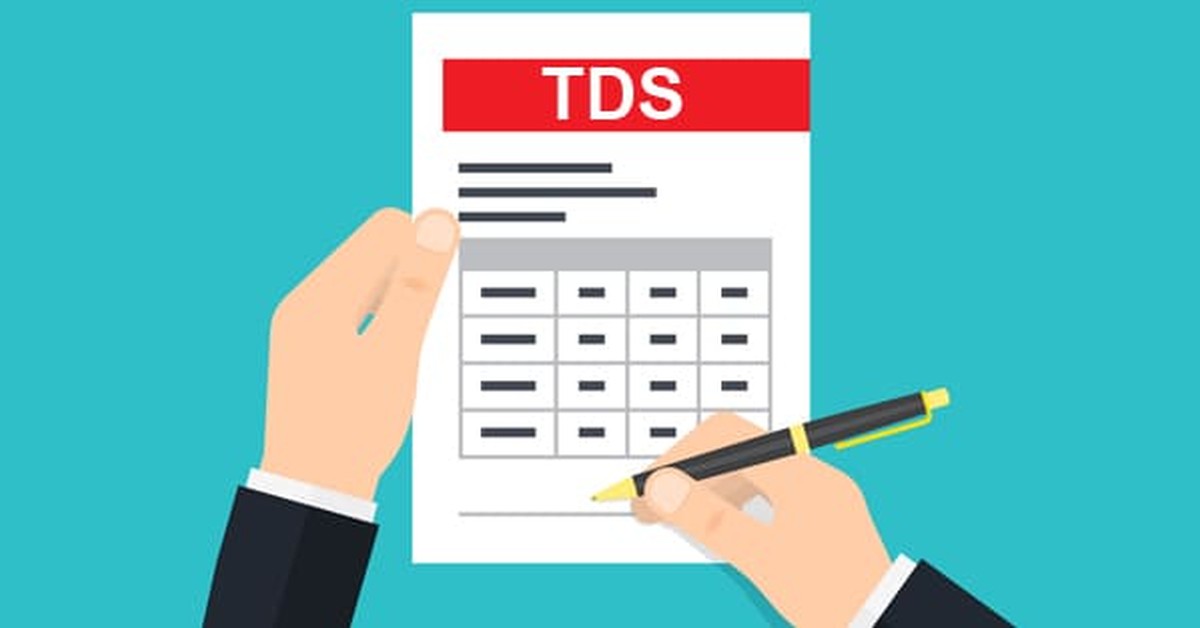TDS stands for 'Tax Deducted at Source'. It was introduced to collect tax at the source from where an individual's income is generated. The government uses TDS as a tool to collect tax in order to minimize tax evasion by taxing the income (partially or wholly) at the time it is generated rather than at a later date.
TDS is applicable to the various incomes such as salaries, interest received, the commission received, etc. TDS is not applicable to all incomes and persons for all transactions. Different rates of TDS have been prescribed by the Income Tax Act for different payments and different categories of recipients
TDS works on the concept that every person making a specified type of payment to any person shall deduct tax at the rates prescribed in the Income Tax Act at source and deposit the same into the government's account.
The person who is making the payment is responsible for deducting the tax and depositing the same with the government. This person is known as a 'deductor'. On the other hand, the person who receives the payment after the tax deduction is called the 'deductee'.
How TDS works
The entity making a payment (which is subject to TDS) deducts a certain percentage of the amount paid, as tax and pays the balance to the recipient. The recipient also gets a certificate from the deductor stating the amount of TDS. The deductee can claim this TDS amount as tax paid by him (i.e. the deductee) for the financial year in which it is deducted.
The deductor is duty-bound to deposit the TDS with the government. Once deposited this amount reflects in the Form 26AS of individual deductees on the TRACES website linked to the income tax department's e-filing website.
Form 26AS is a statement that shows the amount of tax deducted and deposited in a person's name/PAN. An individual can, therefore, view/check the TDS from incomes paid to him by viewing this Form 26AS. Each deductor is also duty-bound to issue a TDS certificate certifying how much amount is deducted in the deductee's name and deposited with the government.
TDS only applicable above a threshold level
One must remember that TDS on specified transactions is deducted only when the value of the payment is above the specified threshold level. No TDS will be deducted if the value does not cross the specified level. Different threshold levels are specified by the Income Tax department for different payments such as salaries, interest received, etc. For example, there will be no TDS on the total interest received on FD/FDs from a single bank if it is less than Rs 10,000 in a year from that bank.
Also, GST should be excluded while deducting TDS. [Circular No.23/2017 dated 19th July 2017]
Changes in the rate of Tax Deduction at Source (TDS)
In order to provide more funds at the disposal of the taxpayers for dealing with the economic situation arising out of the COVID-19 pandemic, the rates of Tax Deduction at Source (TDS) for the following non-salaried specified payments made to residents has been reduced by 25% for the period from 14th May 2020 to 31st March 2021. All sections other than Section 192 and 194N are covered under this

Date to Deposit TDS
|
TAX DEDUCTED AT SOURCE (TDS) |
TAX COLLECTED AT SOURCE (TCS) |
|
7th day of next month (30th April for TDS deducted in the month of March) |
7th day of next month (for TCS collected in the month of March - 7th April) |
Payment of Tax, Quarterly Statement, and Furnishing TDS/TCS Certificate
|
Quarter ending on |
Due Date for Quarterly TDS Statement in Form no. 24Q/26Q/27Q |
Due Date to issue TDS Certificate in Form no. 16A |
Due Date for Quarterly TCS Statement in Form no. 27EQ |
Due Date to Issue TCS Certificate in Form no. 27D |
|
30th June |
31st March 2021 |
15th August |
31st March 2021 |
15th April 2021 |
|
30th September |
31st March 2021 |
15th November |
31st March 2021 |
15th April 2021 |
|
31st December |
31st January 2021 |
15th February |
15th January 2021 |
30th January 2021 |
|
31st March |
31st May 2021 |
15th June (Due date for issuing Form 16 FY 20- 21 is also 15th June) |
15th May 2021 |
30th May 2021 |






 CAclubindia
CAclubindia
